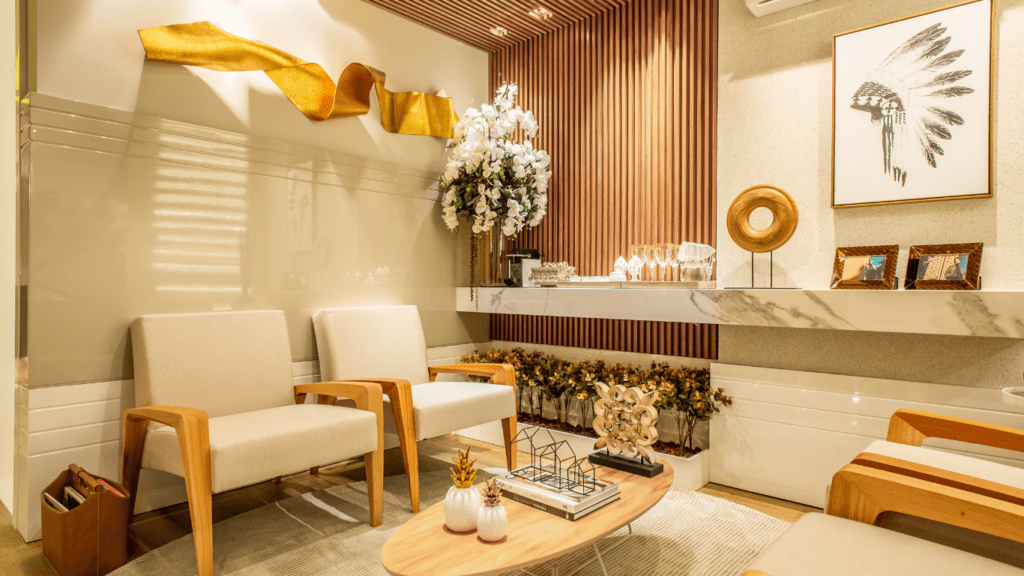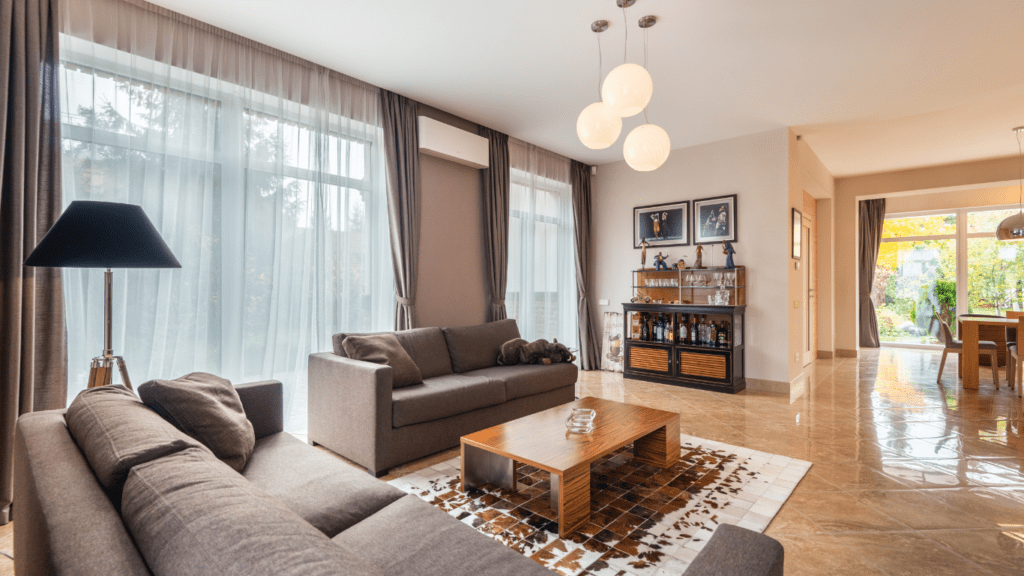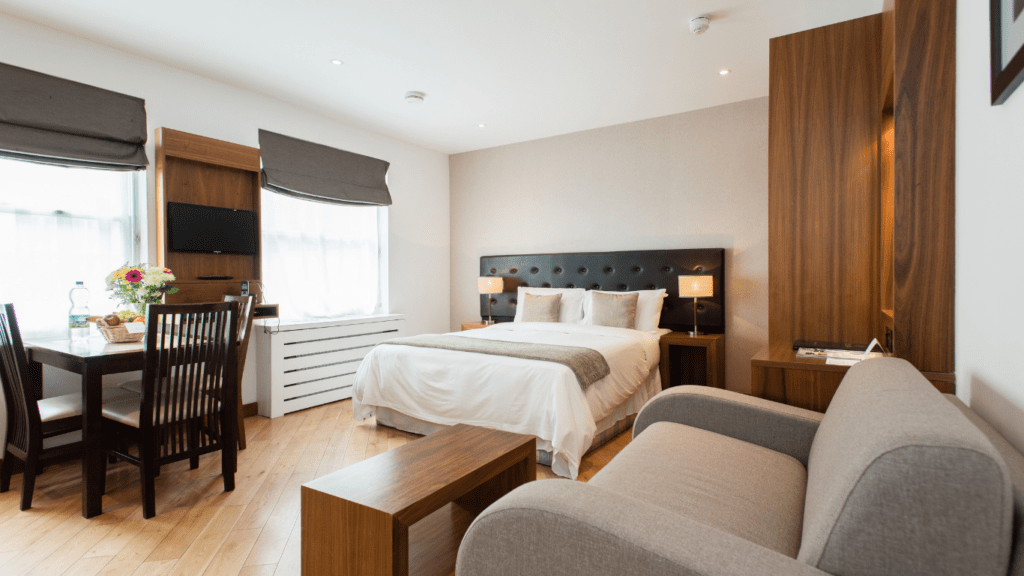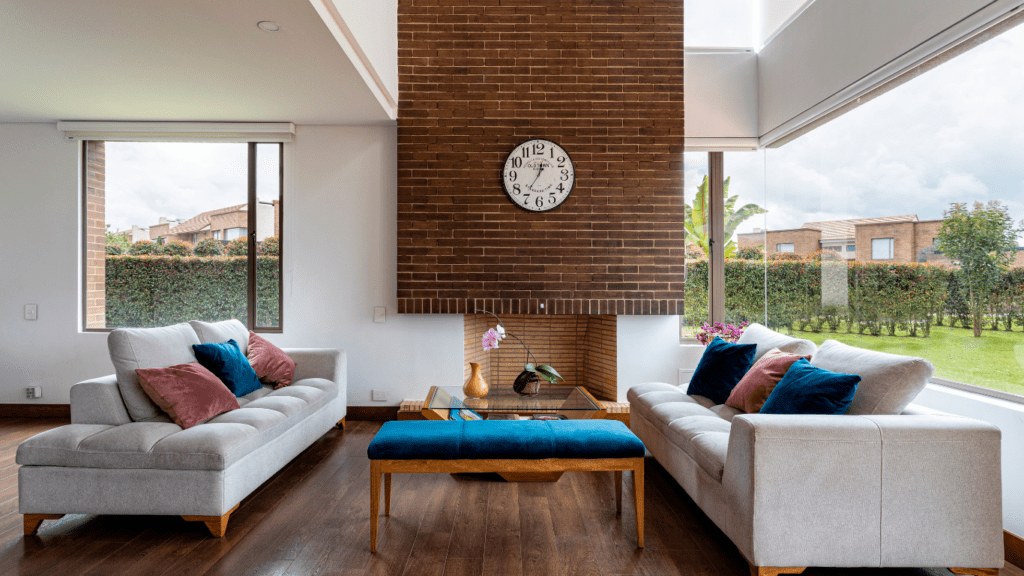Importance Of Natural Light In Your Home
Natural light transforms any space. It enhances mood, boosts productivity, and even reduces energy consumption. Studies show that exposure to natural light improves sleep patterns by regulating the body’s circadian rhythm. Efficient use of daylight can also lead to decreased dependency on artificial lighting, which in turn lowers electricity bills.
Proper furniture placement can amplify the effects of natural light. By positioning furniture away from windows, light can flow freely and illuminate the entire space. This approach creates a sense of openness and warmth. Reflective surfaces such as mirrors and glass tables can further magnify the impact of natural light, making rooms appear brighter and more inviting.
Natural light also supports physical health. It provides Vitamin D, crucial for bone health, and has been linked to improved mental health by reducing symptoms of depression. A home bathed in natural light not only looks better but also contributes to the well-being of its occupants. Using light-colored furnishings and minimal window treatments can enhance these benefits by maximizing light entry.
Incorporating natural light into your home design is more than just an aesthetic choice. It’s an investment in better living conditions, both in terms of comfort and energy efficiency. By thoughtfully arranging your furniture and choosing materials that reflect light, you can fully leverage the sun’s benefits.
Choosing The Right Furniture
Selecting the right furniture can significantly enhance the flow of natural light in your home. By making thoughtful choices, you can create a more open, bright, and inviting space.
Light-Colored Furniture
Light-colored furniture reflects more light compared to dark pieces. Using items like:
- white sofas
- beige chairs
- pale wood tables
helps bounce natural light around the room. These hues don’t absorb light but instead scatter it, creating a brighter environment. For instance, placing a light gray armchair near a window enhances the light intake throughout the room.
Transparent And Reflective Materials
Furniture made from transparent and reflective materials also amplifies natural light. Glass tables, acrylic chairs, and mirrored cabinets allow light to pass through and reflect, reducing shadows and making rooms appear larger. A glass coffee table positioned in front of a sunlight-window not only preserves the light flow but also makes the area seem more spacious. Reflective surfaces such as chrome fixtures can further enhance this effect.
Strategic Furniture Placement
Strategic furniture placement can greatly enhance the distribution of natural light throughout your home.
Avoid Blocking Windows
Ensuring windows remain unobstructed is key to maximizing natural light. I avoid placing large, opaque furniture such as bookshelves or sofas directly in front of windows. Instead, I use low-profile pieces like benches or transparent items like glass tables to ensure light permeates the space effectively.
Utilize Mirrors
Mirrors reflect and amplify natural light, brightening up any room. I strategically place mirrors opposite windows or near light sources to bounce light around the room. For instance, a large mirror above a console table adjacent to a window can significantly increase light flow and create a sense of openness and brightness.
Furniture Height Considerations
Furniture height impacts light distribution. I opt for low-height furniture for rooms where maximum light penetration is desired. For example, low-back sofas or short cabinets near windows ensure that light spreads evenly. Tall pieces, if necessary, are positioned against darker walls to prevent shadows and maintain brightness.
Enhancing Light With Accessories

Using accessories can greatly enhance the natural light in any room, making it brighter and more welcoming. Strategic use of curtains, blinds, and lighting fixtures can optimize light distribution.
Curtains And Blinds
- Curtains and blinds play a crucial role in controlling the amount of natural light entering a room.
- Sheer curtains, for example, diffuse light softly, creating a bright yet gentle ambiance.
- In contrast, heavy drapes can block light and make a room feel darker.
- I find that using light-colored or sheer materials maximizes light entry while maintaining privacy.
- Blinds with adjustable slats, like Venetian or vertical blinds, allow precise control over light intensity and direction.
By angling them properly, one can direct light into specific areas without causing glare.
Lighting Fixtures
Lighting fixtures complement natural light by filling in gaps during evening hours or on cloudy days. Reflective light fixtures, such as those with metallic finishes, can amplify the available natural light. I recommend placing sconces or table lamps near corners to eliminate shadows and distribute light evenly. Pendant lights and chandeliers with clear or translucent shades enhance brightness while adding an aesthetic appeal. Dimmable lighting options offer flexibility, allowing adjustments in intensity to match the natural light present at different times of the day.
Seasonal Adjustments
As seasons change, it’s essential to adapt furniture placement to maximize natural light. This ensures a bright, inviting space throughout the year.
Winter Strategies
During winter, days are shorter and natural light is limited. To combat this, I move my furniture closer to windows. This includes placing my sofa or reading chair near windows to benefit from the available light. By keeping window areas clear of large or dark furniture, I ensure the space remains open and bright. I also use reflective surfaces, like glass tables or mirrors, to amplify any available light. For added warmth, I choose light-colored textiles, such as cream-colored throws or pale rugs, that reflect light and create a cozy atmosphere.
Summer Strategies
In summer, excess light can sometimes create glare. To manage this, I rearrange my furniture to avoid direct exposure. For instance, I position my seating areas perpendicular to windows to prevent harsh sunlight from hitting screens and eyes. Light, sheer curtains help diffuse sunlight while maintaining brightness and reducing glare. I keep rooms airy by using light-colored, minimal furniture that doesn’t absorb heat. Additionally, I place reflective accessories, like metallic vases or mirrored trays, strategically to bounce light around, enhancing the natural radiance without overwhelming the space.



 Betsylie Sheetsin – Home Renovation Expert
Betsylie Sheetsin serves as the Home Renovation Expert at Castle Shelf House, specializing in giving practical advice for both small and large-scale home improvements. With years of experience in construction and renovation, Betsylie understands the importance of blending durability with design. Her insights into home renovation projects, along with expert advice on the latest materials and techniques, empower homeowners to tackle even the most ambitious projects confidently.
Betsylie Sheetsin – Home Renovation Expert
Betsylie Sheetsin serves as the Home Renovation Expert at Castle Shelf House, specializing in giving practical advice for both small and large-scale home improvements. With years of experience in construction and renovation, Betsylie understands the importance of blending durability with design. Her insights into home renovation projects, along with expert advice on the latest materials and techniques, empower homeowners to tackle even the most ambitious projects confidently.
